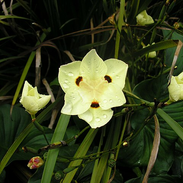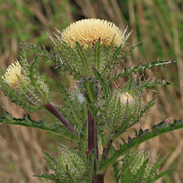Crow Poison, also known as False Garlic (Nothoscordum bivalve), is a common wildflower found throughout North America. While its name might conjure images of toxicity, this humble plant has a history of medicinal use, particularly in Native American traditions. However, it's crucial to approach Crow Poison with caution, as its potential benefits are intertwined with potential risks.
Traditional Uses:
Wound Healing: Some Native American tribes used Crow Poison topically to treat wounds, sores, and skin irritations. This suggests potential astringent and antimicrobial properties.
Respiratory Ailments: It may have been used to address coughs, colds, and other respiratory issues.
Anti-inflammatory: Crow Poison may have been employed for its potential anti-inflammatory effects to alleviate pain and swelling.
Potential Properties & Modern Research:
Scientific research on Crow Poison is currently very limited. However, some preliminary findings and its traditional uses suggest potential areas for further investigation:
Antimicrobial Activity: Given its traditional use for wounds, it's possible that Crow Poison possesses antimicrobial properties that could be effective against bacteria or fungi.
Anti-inflammatory Effects: Its traditional use for pain and swelling hints at potential anti-inflammatory compounds.
Cytotoxic Activity: Some very preliminary research suggests that Crow Poison may contain compounds with cytotoxic activity, meaning they could potentially kill cancer cells. However, this is in its very early stages and requires much more investigation.
Cautions and Considerations:
Toxicity: While Crow Poison is generally considered to have low toxicity to humans, it's important to note that its name stems from its potential toxicity to livestock, particularly crows. Ingesting large amounts can cause gastrointestinal upset.
Limited Research: The medicinal properties and safety of Crow Poison have not been extensively studied. More research is crucial to understand its potential benefits and risks.
Misidentification: Crow Poison can be mistaken for wild garlic or onions. Accurate identification is crucial to avoid accidental poisoning.
Pregnancy and Breastfeeding: Pregnant and breastfeeding women should avoid using Crow Poison due to a lack of safety data.
The Future of Crow Poison:
Crow Poison, despite its ominous name, presents an intriguing opportunity for future research. Its traditional uses and preliminary findings warrant further investigation to explore its potential therapeutic benefits. However, caution and rigorous scientific study are essential to ensure its safe and effective use.
Disclaimer: This blog post is for informational purposes only and should not be considered medical advice. Always consult with a qualified healthcare professional before using any herbal remedies, especially those with limited research like Crow Poison.













